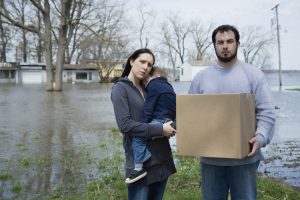(BPT) – We know the old saying: when it rains, it pours… and when it pours, it floods. With winter snow storms coming to an end, the threat of flooding increases as the snow begins to melt and the rivers and creeks begin to swell. It’s easy to forget about how powerfully destructive water can be. In fact, nine out of 10 natural disasters include flood, making it the number one disaster in the United States according to the National Flood Insurance Program (NFIP). However, only 15 percent of homeowners have flood insurance. From 2006 to 2015, total flood claims cost more than $1.9 billion per year and the average claim was more than $46,000 during that time.
For most homeowners, that means looking into flood insurance. But does it make sense for everyone?
Here are some of the most common misconceptions about flood insurance:
“Flood is covered by my homeowners insurance policy.”
Typically, flooding is not covered by a homeowners insurance policy. Therefore, homeowners must purchase a separate policy through the National Flood Insurance Program (NFIP) from their insurer. If the homeowner does have flood insurance, it’s important to regularly reevaluate it to ensure it provides adequate coverage.
“Flood insurance is too expensive.”
To emphasize an earlier point, the average cost of a flood claim hovered around $46,000 from 2011 to 2015. The average annual premium for flood insurance in the U.S. is $650, according to NFIP. Do the math.
“I don’t live in a flood plain so I don’t need flood insurance.”
The Federal Emergency Management Agency found that as many as 20 percent of flood claims come from moderate-to-low risk areas. These are areas in which lenders don’t require the purchase of flood insurance. However, “less likely” doesn’t equal “no risk.” Complete this quick self-survey: “Does it rain where I am?” If the answer is yes, consider flood insurance because it can flood anywhere it rains.
“Flood insurance won’t provide me with the coverage I need anyway.”
It is true that the NFIP limits coverage of a single residence to $250,000 for the structure and another $100,000 for contents to the home, but they aren’t the only source for coverage. Excess flood coverage can also be purchased above the $250,000 limit.
“I’ll just wait until it rains.”
Sorry to break this to you, but most insurers require a 30-day waiting period before a policy is effective. Unless your own forecasts rival the best science and technology have to offer, it might be wise to stick to the mantra, “better safe than sorry.”
The consequences for being ill prepared for a flood can be long lasting. Research and carefully weigh the risk to you and your property. Chances are that you’ll find that it might be more reasonable than you thought. Visit USAA.com/flood for more tips and information on flood insurance and what to do before, during and after flooding occurs. You can also visit FEMA’s Flood Map Service Center for more information or to determine your flood risk.
Please click here to contact a Pacific Home Brokers™ agent to learn more.

